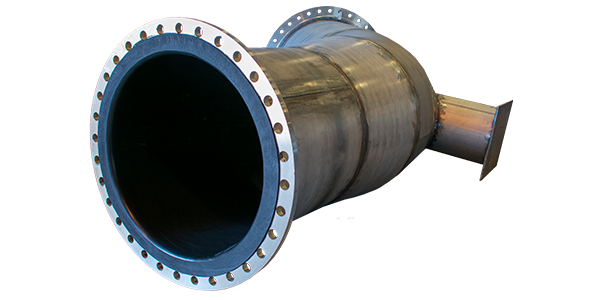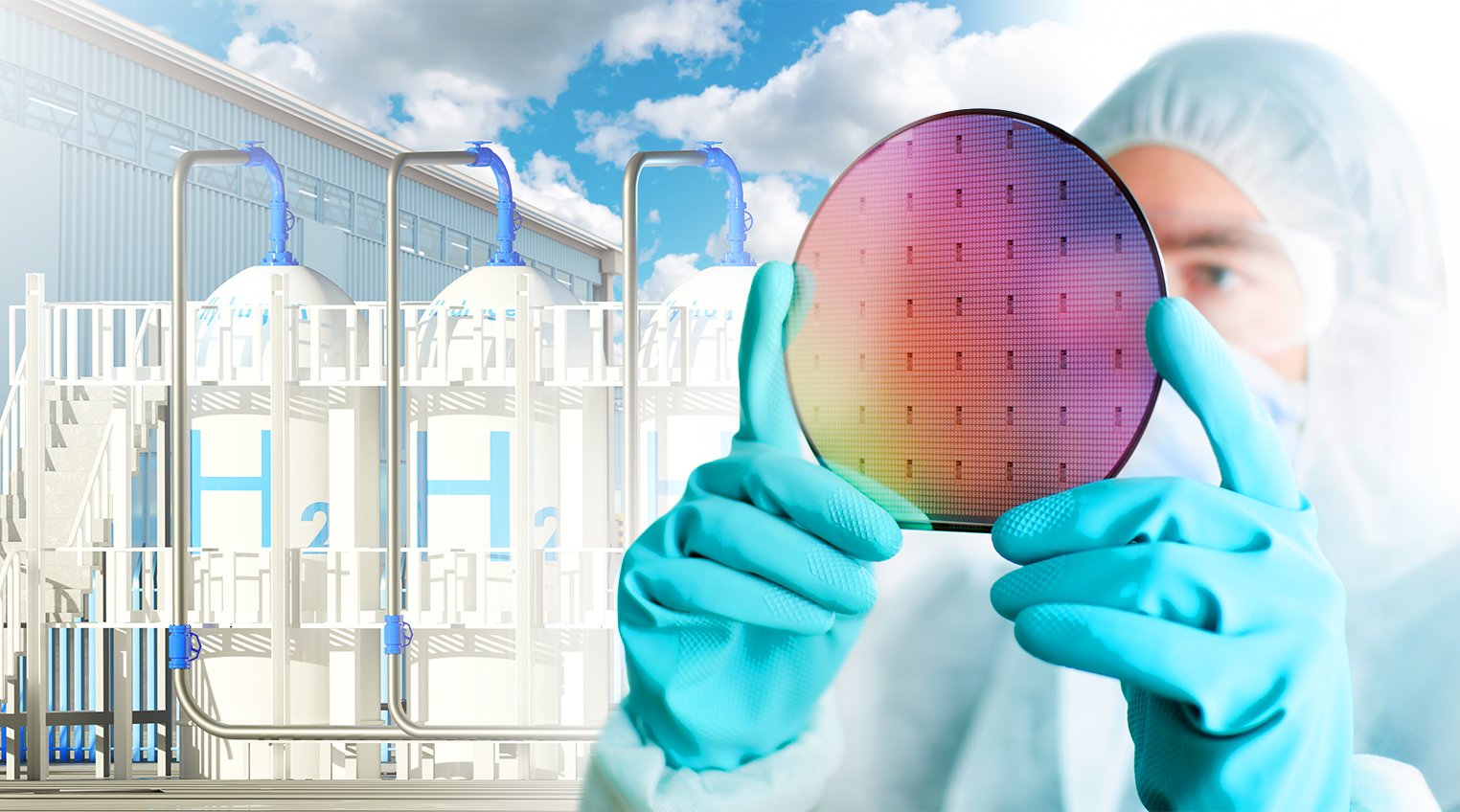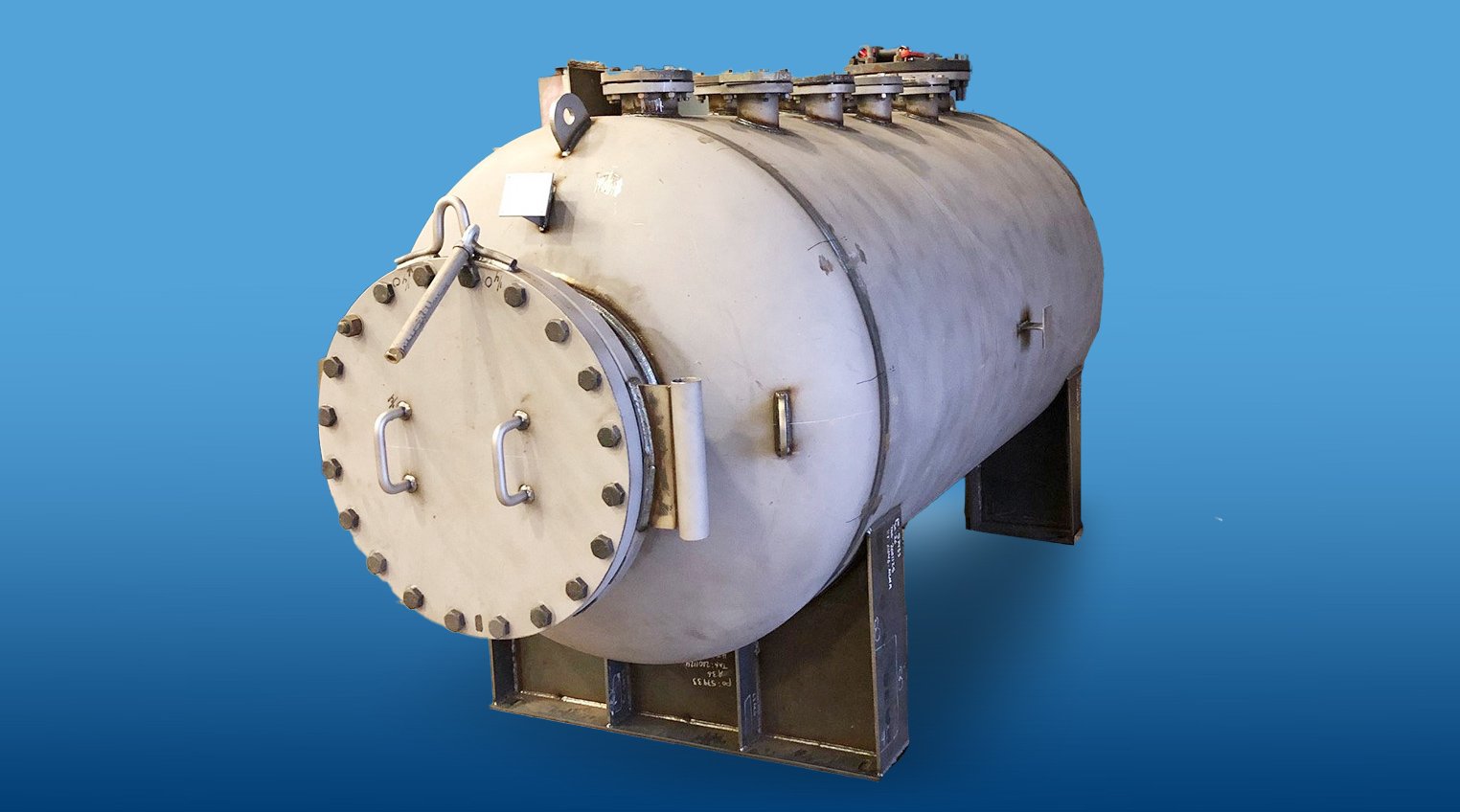Tips, Tricks, and Traps in Corrosion Protection Lining Technology
Every process engineer faced with choosing the best corrosion protection approach for their fluid handling systems faces the classic engineering question of how to balance cost with performance. Stopping production to repair or replace piping or process equipment that has failed due to corrosion is expensive. As an experienced engineer knows, the direct costs of maintenance labor replacement parts can easily be eclipsed by those associated with downtime, including overtime for production personnel and expediting charges for late orders. In most applications, the initial cost of the selected corrosion protection technology represents less than half of its lifetime cost for the facility.
Complicating the corrosion protection question for the process engineering team is determining just which type of corrosion control technology will be most effective. There are, in practice, a variety of options to choose from when deciding which lining technology is the best fit for any application. While it may seem overwhelming at first, understanding some details about the materials used, processes employed and common use cases can help ensure the right protection technology is selected.
CORROSION TECHNOLOGIES AT A GLANCE
| Rotolining | Sheet Lining | Powder Coating | FRP | Epoxy Coating | Glass Lining | Exotic Alloy | |
| Seamless Liner | Yes | - | Yes | - | Yes | Yes | - |
| Mechanically-bonded Liner | Yes | - | Yes | - | Yes | Yes | - |
| Complex Shapes | Yes | - | - | - | - | - | Yes |
| Thick Liner (>0.188&sec;) | Yes | - | - | - | - | - | - |
| Resists Abrasion | Yes | - | - | - | - | Yes | Yes |
| Easily Repaired | Yes | Yes | - | - | - | - | Yes |
| Impact-resistant | Yes | Yes | - | Yes | - | - | Yes |
| No direct internal access req'd | Yes | - | - | - | - | - | Yes |
| Reuse Existing Structures | Yes | Yes | Yes | - | Yes | - | - |
METHODS OF CORROSION PROTECTION
There are a variety of methods currently used to provide corrosion protection with varying levels of defense. Let’s begin by taking a look at the most widely used methods available today.
RMB Products Technology Is the Ideal Solution in the Most Critical Applications
- Chemical processing applications in aggressive (acidic or alkali) environments
- Installations where customers have experienced failures with a prior corrosion protection technology:
- Corrosive fluids get between the pipe and liner creating weak spots or holes
- Coatings (fluoropolymer or epoxy) used to wear more quickly than anticipated
- Liner material used distorts and creates gaps that can corrode or wear
- Fluids being pumped contain grit (sand) or other abrasive media, as well as corrosive chemicals
- Pipes that include geometry changes with the piping, such as neck downs, elbow and tee joints, or other complex geometries that are not easily or consistently coated or lined
Roto-Lining
Enlisting the use of roto-molding technology, the rotolining of pipes provides an optimal level of long-lasting protection from corrosive materials for vessels, fittings, flanges, and other process equipment. With permanently bonded, seamless coating thicknesses of up to 0.45” available in materials such as High-Density Polyethylene (HDPE), Nylon 12, PFA (Teflon), and ETFE (Tefzel), the performance of these systems is hard to match. These heavier liners provide the most durable and longest-lasting protection on the market today.
Fusion Bonded Epoxy Coating
Commonly known in the industry as FBE, this protection system is applied by heating the part and then applying a powdered thermoset resin and hardener to the heated surface. The heated powder melts and then flows over the surface, providing a protective coating when cured that is capable of withstanding high temperatures. There’s a limitation to consider with FBE, however: coating thicknesses are limited to 0.04”, which limits abrasion resistance and overall durability.
Powder Coating
Similar in application to FBE, powder coating employs a granulated thermoset or thermoplastic powder that is applied electrostatically to the protected surface. The part is then heated in an oven to a temperature that causes the powder to melt and flow over the surface uniformly. Again, coating thicknesses are limited to approximately 0.04".
Sheet Lining
In this method, polymeric sheets of plastic are applied to the internal walls of a vessel with an adhesive. The sheets typically come in a standard size and must be cut and tailored to the specific dimensions of the part to be lined. Seams between the sheets are then plastic welded together after they have been mounted in place. The costs associated with sheet lining can vary greatly, as it is labor-intensive, with costs increasing with the complexity of the part geometry. Maintaining the adhesion of the sheets to the protected surface can be an issue, especially at higher working temperatures.
Fiberglass Reinforced Plastic (FRP) Liners
This is essentially the same as sheet lining, but instead of HDPE, Teflon, or similar polymer, sheets of FRP are bonded to the interior surface of the vessel. FRP can offer added corrosion protection against certain substances such as saltwater and has the added benefit of being non-conductive. As with sheet linings, adhesion to the substrate can be an issue. Joints between sheets have to be bonded, which is time-consuming and is prone to leak.
Dual Laminate
Sheet lining is not limited to steel applications as it can also be used to line fiberglass vessels. The benefit of this method is that protection from external corrosion is also realized. This practice can be of use in some limited low-pressure applications. The general limitations enumerated above for sheet lining metal parts apply to fiberglass parts as well.
Loose Lining
Loose lining uses a Teflon or other polymer sleeve that is slid into a pipe or vessel. The liner is flared on the flange faces to hold it in place. These liners can be quite permeable and the voids that typically form behind the liner can allow for chemistry to pool and corrode. This method can be the least costly way to line a smaller diameter pipe, but costs increase significantly as pipe diameters increase.
Glass Lining
Glass lining provides a seamless, mechanically bonded liner that also provides good resistance at higher temperatures. As the name implies, a vessel is coated with ground glass powder and then heated in an oven to a temperature that allows the powder to return to a molten state. The piece is then cooled under controlled conditions, leaving a hard, protective glass surface. The primary disadvantage of this method is that the glass can chip and fracture easily. Even a small crack or chip can result in the entire vessel having to be recoated to guarantee protection.
Exotic Alloy
Finally, there is the option of foregoing a protective liner and manufacturing the entire pipe or fitting with a corrosion-resistant alloy. Materials such as 316 stainless steel, Super Duplex, Tantalum, or Hastelloy are all metals that offer excellent inherent protection from chemical corrosion. However, the cost per pound of these materials is extremely high and delivery times can be prohibitively long due to limited availability.
HERE ARE THE TIPS
There are protection methods of varying durability and cost to meet almost every corrosion prevention application. But, having so many options can be a distraction from the task at hand, which in every case is the protection of a vessel or fitting from an early demise due to corrosion. That goal needs to remain the focus throughout the liner selection process. When defining selection criteria, here are a variety of factors to include on any engineering checklist for corrosion protection:
What is your flow media? First and foremost, the characteristics of the flow media need to be known in as much detail as possible. Technical data sheets are an excellent resource for gathering material composition information, as are safety data sheets. Armed with this information, an applications engineer can begin the process of determining what method and materials will provide the best protection possible.
The chemical composition of the flow media needs to be studied for any possible incompatibilities with potential lining materials. For instance, materials containing aromatic hydrocarbons such as styrene will quickly destroy parts made from high-density polyethylene. A more suitable choice would be a Teflon liner, which can readily withstand prolonged contact with styrene. It should also be noted that the temperature range of the flow media also needs to be understood, as material incompatibilities can vary as the media and liner become hotter. Also, as discussed earlier, the adhesives used to apply some liners can fail at elevated temperatures.
Beyond any chemical incompatibilities between the flow media and the liner, the presence of any impurities or solids in the media needs to be considered as well, as these can abrade the liner and significantly shorten its durability. If solids are unavoidable and filtration would prove too costly or restrict too much flow, then a heavier wall liner, such as those provided by rotolining should be selected to provide additional abrasion protection.
Understanding how the flow media and the liner will interact is of critical importance because of how this affects the expected life of the liner. A roto-lined vessel will have a longer expected life than a powder-coated vessel.
What are your maintenance costs? Typically, longer life equates with higher liner cost. But, the cost of the liner is not the only cost to be considered. What about the costs associated with taking that vessel out of service to replace it? Are there required maintenance procedures for the liner that will incur ongoing costs, or can it be installed and forgotten about for fifteen years? Finally, and most importantly, what are the potential safety risks to employees, the general public, or the environment if a liner fails?
What installation considerations do I have? Also worthy of some thought in the selection process are the lead times associated with the different lining methods. It may not make good business sense to keep a lined fitting on the shelf for routine or emergency replacement situations. But, if that is an accepted risk, then the lead time to get a replacement lined fitting should be established and accepted as well. At the very least, a contingency plan should be in place to help prevent or prepare for any extended downtime.
What surface prep is required? Every application, with any coating material you select, requires proper surface preparation to ensure the coating bonds correctly to the metal, existing corrosion is eliminated, and existing welds are smooth, and porosity free. However, every lining material has different surface prep requirements, and some are more forgiving than others. Fusion Bonded Epoxy, for instance, is much more particular in preparation requirements than HDPE. Read up on these requirements to understand what is needed for metal preparation, adhesives, etc.
UNDERSTANDING THE TRICKS AND TRAPS
Every corrosion protection approach comes with a variety of plusses and minuses engineers must consider, compared to roto-lining:
vs Fusion Bonded Epoxy (FBE)
FBE’s dramatically limited thickness at 0.040” doesn’t compare to roto-lining’s 0.450” protection against corrosion and abrasion. Further, FBE is another technique that requires internal access to parts, while roto-lining does not.
vs Powder Coatings
Roto-lining’s greater thickness at 0.450” provides more protection than the 0.040” thicknesses of powder coatings. It also avoids the cracking that sometimes accompanies thin powder coatings, which of course would eventually damage the steel pipes and vessels you’re trying to protect. Powder coating also requires internal access to surfaces, while roto-lining is easier to line even complex parts without direct access to internal surfaces.
vs Sheet lining
The application of sheet liners requires complete internal access to pipes and vessels, which can be problematic, especially when compared to the less restrictive line of sight access required for rotolining. Rotolining offers durable liners that come at 0.450” thickness, which reduces chemical seepage, vs 0.118” thick sheet liners on the market. When compared to sheet lining, rotolining’s mechanical bond eliminates any need for adhesives and resulting delamination.
vs Fiberglass Reinforced Plastic (FRP)
FRP is limited in pressure ratings, due to pressure limitations of the FRP shell. It’s also a brittle material that’s susceptible to cracking. Some companies offer a dual-laminate FRP solution that comes with a sheet liner for added protection, but that leads to the same problems with adhesives and delaminations as other sheet lining solutions.
vs Dual Laminate
As with sheet lining, dual laminate protection systems rely on complete internal access for application on the laminate. Seams between laminate sections then have to be welded to provide a leak-free surface. These welds tend to fail over time.
vs Loose Lining
Loose liners are able to "float" within the vessel or pipe, which allows voids to form under the liner, which will eventually lead to corrosion. The mechanical bond between a roto-lining and the substrate prevents these voids from being formed.
vs Glass Linings
As mentioned earlier, brittle glass linings don’t offer the impact or abrasion resistance of roto-lining or other techniques. Any crack or damage to the glass lining means the entire pipe or vessel needs to be removed and repaired completely.
vs Exotic Alloys
Some solutions are finding their way to the market that are based on exotic alloys, but these are typically more expensive and often over-engineered for the majority of applications. Lead times are longer, particularly for more complex parts. At the end of the day, some exotic alloys are still susceptible to the chemical penetration and corrosion that roto-lining is able to withstand.
RISK AND REWARD
Like any other long-ranging business decision, choosing the best corrosion protection method relies upon gathering as much relevant information as possible, and then using that data to make an informed choice. Some applications will have at least two different lining methods that will check all the boxes when it comes to corrosion prevention and expected life, and there may be additional benefits provided by a particular method or supplier that could also play a role in the selection process. A thorough cost/benefit analysis should be performed to assist with the final decision. The supplier comes into play as well as the technology that is chosen. A new supplier, or one that is unproven or has a poor quality record, carries just as much risk to the process engineer as in choosing the wrong lining technology for the application.
In the end, the trick is being able to understand the risks and rewards of using each of these corrosion protection systems that are available today and making informed choices, rather than being faced with learning about those risks after a liner has failed.



